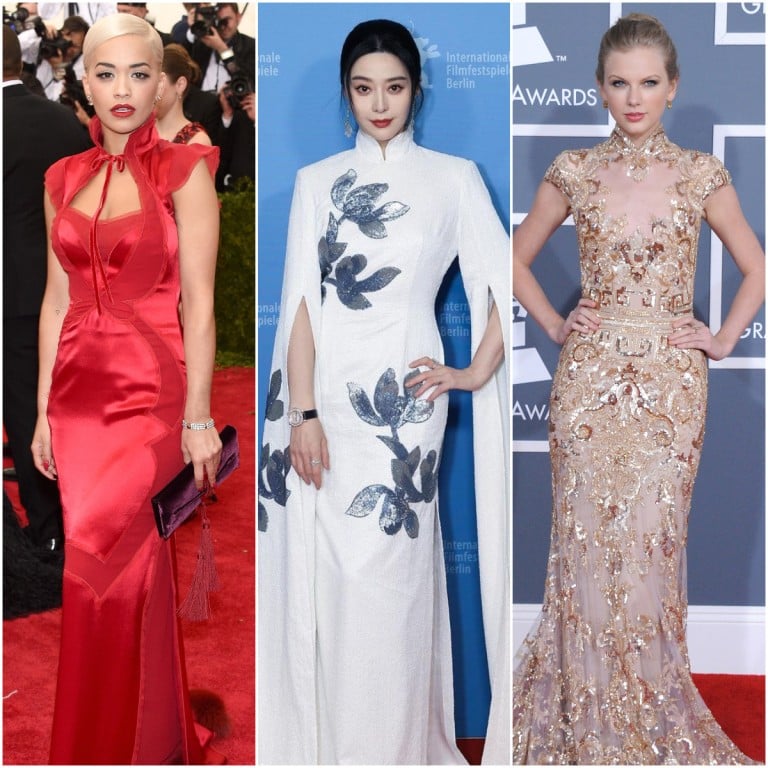How the qipao has inspired red-carpet looks over the years: designers from Carolina Herrera to Tom Ford have dressed the likes of Taylor Swift, Rita Ora and Gong Li in twists on the Chinese classic

The traditional Chinese dress, which had its heyday in the glamorous 20s and 30s, is now a symbol of Chinese style that has lit up films like In the Mood for Love – and red carpets aplenty
The qipao, also known as the cheongsam – meaning “long garment” – is distinctive for its mandarin collar, curve-hugging bodice and thigh-high skirt slit. The silhouette was dominant in the 1920s and 30s and has since become synonymous with conventional Chinese beauty and style. It has often been used as a visual cue to capture a certain aesthetic in cinematic masterpieces, including The World of Suzie Wong and Wong Kar-wai’s In the Mood for Love.

Though traditionally made with simple, knotted button fastenings on one side of the lapel, modern iterations of the qipao incorporate an array of contemporary individual elements to create designs that feel fresh and current on today’s fashion scene. Examples from Chinese designers and brands forging a path in global fashion – such as Guo Pei and Shiatzy Chen – are sometimes photographed on the world’s swankiest red carpets.

For years, qipao-inspired dresses were the go-to choice for Chinese actresses making their first forays into the world film scene at major festivals, including those of Cannes and Venice.
Actresses such as Li Bingbing, Fan Bingbing and Gong Li have worn elaborate interpretations of these dresses on the international stage, garnering both good and bad reviews. While a recognisable part of Chinese culture, overly embellished versions can risk looking like costumes when not executed with precision.

At the Cannes Film Festival in 2004, actress Gong Li walked the red carpet with Tony Leung and Zhang Ziyi in a green-blue dress featuring a cloud print often found in traditional Chinese art and a silhouette heavily influenced by the qipao. The garment featured many of the design elements of the traditional long dress, but was given a touch of sex appeal with an open neckline.





